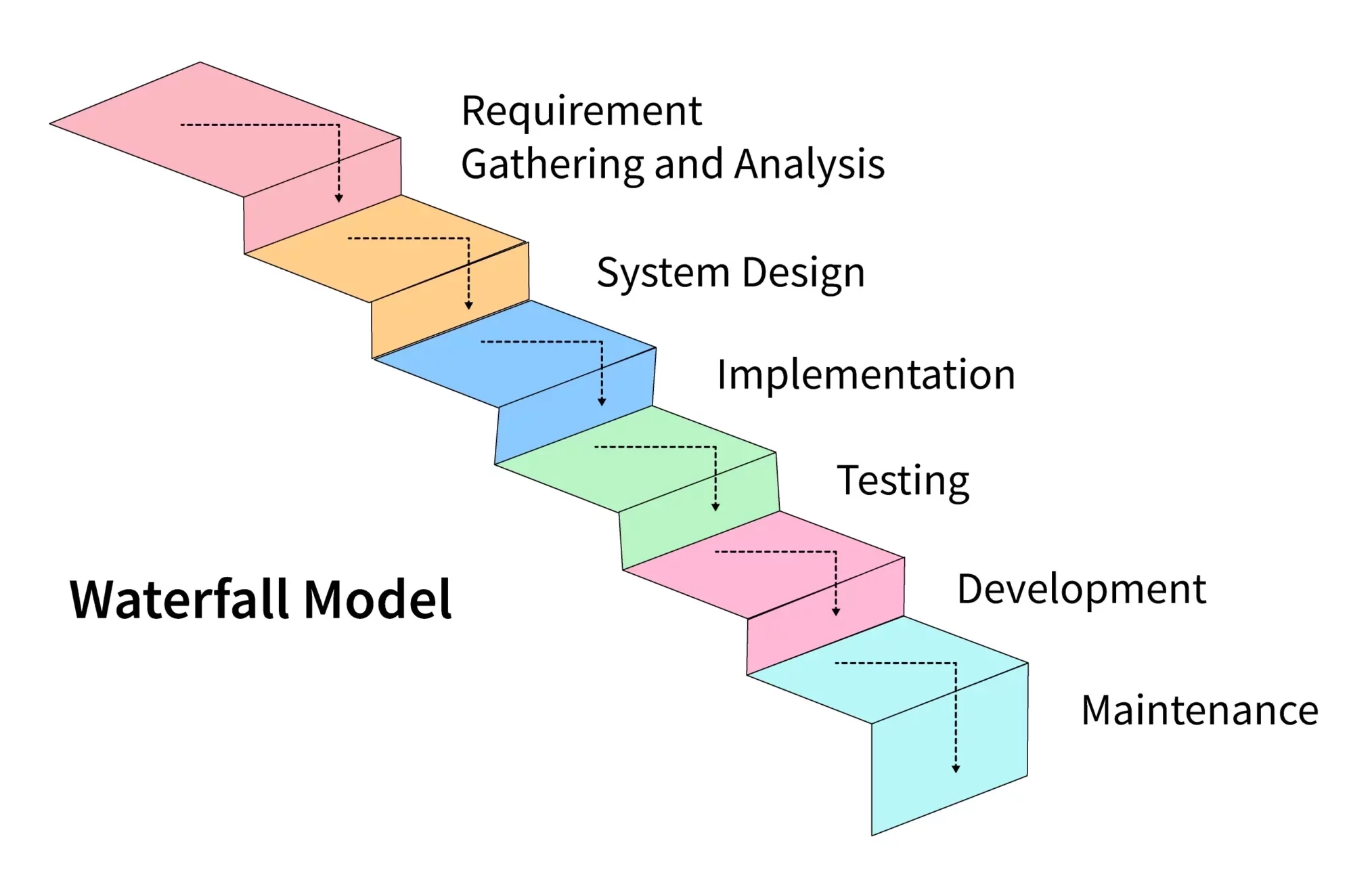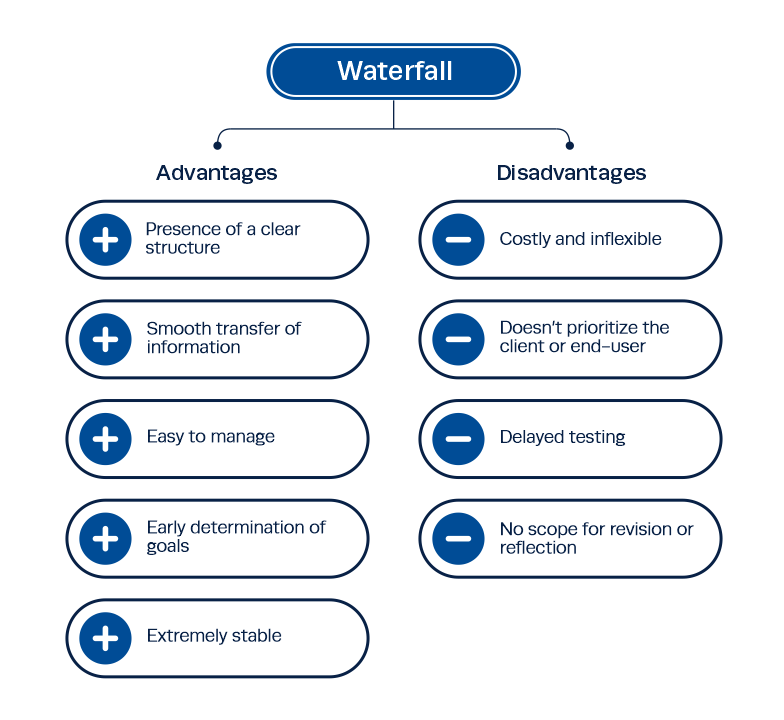
What is the Waterfall Method in Software Engineering?
Table of Content
The Origins of the Waterfall Model in Software Engineering
How the Waterfall Method in Software Engineering Actually Works and Why Each Step Matters?
Where the Waterfall Method Excels
Challenges of the Waterfall Method in Software Engineering
Modern Adaptations: Hybrid and Evolving Waterfall Approaches
Is the Waterfall Method in Software Engineering Still Relevant in 2025?
How Jaro Education Helps You Master the Waterfall Method
Conclusion
The Origins of the Waterfall Model in Software Engineering
Before we get into the technicalities, let’s learn about the origin of the waterfall method in software engineering. The approach was first introduced by Dr. Winston W. Royce in 1970. Ironically, Royce used it to demonstrate the limitations of a purely sequential process. Despite this, industries that required thorough documentation and minimal risk embraced it enthusiastically.
Waterfall mirrored the engineering and manufacturing workflows of the time, which also followed linear, step-by-step procedures. For sectors like defense, aerospace, and healthcare—where failures can be catastrophic—the appeal of a predictable, well-documented development method was undeniable.
Over time, the waterfall method became the standard in software projects that couldn’t afford unexpected changes or mid-project experimentation.

*management.org
How the Waterfall Method in Software Engineering Actually Works and Why Each Step Matters?
You can’t really understand the waterfall method in software engineering without looking at the way it flows because that’s the whole point. Everything happens in a sequence. No back-and-forth. No last-minute rewrites. You plan, you design, you build and you don’t loop back unless absolutely necessary.
It’s not flexible, but that’s intentional. It’s built for situations where going back isn’t an option.

*scaler.com
Here’s how the waterfall method in software engineering usually plays out:
Where the Waterfall Method Excels
Let’s be blunt: the waterfall method in software engineering isn’t for every team or every product. But in certain spaces, it’s not just useful—it’s the gold standard.
Here’s where it still dominates:
- When You Know Exactly What You’re Building: If the project’s scope is crystal clear and unlikely to change, waterfall gives you a huge advantage. You spend less time reworking things and more time delivering what you promised.
- In Fields Where Guesswork Isn’t Allowed: Think of sectors like medical software, aerospace systems, or nuclear power controls. These aren’t places where “move fast and break things” is acceptable. You need everything reviewed, documented, and approved. Waterfalls fit naturally in these worlds.
- Large-Scale Projects With Layers of Oversight: Government tenders, enterprise contracts, and compliance-heavy builds—they all want budgets upfront, deadlines upfront, and detailed documentation at every step. Waterfall makes that possible without chaos.
- When Failure Isn’t an Option: If the cost of a mistake is huge be it financially or in terms of safety, then you need a system that emphasizes planning, documentation, and quality control. The waterfall might feel slow, but it’s methodical for a reason.
Challenges of the Waterfall Method in Software Engineering
Despite its advantages, the waterfall method also presents several challenges, particularly in dynamic, fast-changing environments. Here are some of them:
- Rigid Structure: Once a phase is complete, revisiting it is time-consuming and costly. This makes waterfall unsuitable for projects where requirements may evolve.
- Delayed Testing and Feedback: Since testing comes late in the cycle, developers may not discover serious flaws until after the majority of the work is done.
- Low Flexibility: Stakeholders often don’t interact with a working product until the very end, reducing the opportunity for early feedback.
- Time-Intensive Planning: While thorough planning is a strength, it also means longer lead times before development begins. This may not suit companies with tight time-to-market goals.
That said, these limitations are less problematic in structured environments, and many teams have adapted waterfall to include more checkpoints and iterative reviews.

*instituteprojectmanagement.com
Modern Adaptations: Hybrid and Evolving Waterfall Approaches
To address its rigidity, modern organizations often blend waterfall principles with Agile practices, a trend known as the hybrid model.
A common variation is Water-Scrum-Fall:
- Waterfall-style planning and budgeting at the start
- Agile-based development and testing during execution
- Waterfall-style delivery and documentation at the end
This model satisfies the demands of stakeholders who require structure, while giving developers and testers the flexibility to iterate and improve.
Hybrid approaches offer the best of both worlds. They maintain the predictability of waterfall methodology while incorporating responsiveness where it’s most needed.
Is the Waterfall Method in Software Engineering Still Relevant in 2025?
The short answer: Yes, but selectively.
The waterfall method in software engineering may not be ideal for consumer-facing mobile apps or startups that thrive on rapid feedback. However, in industries where reliability, compliance, and documentation are critical, waterfall remains not just relevant but preferred.
Professionals managing fixed-scope projects, especially within government, manufacturing, or health sectors, continue to rely on waterfall because it aligns with how contracts are structured and how accountability is enforced.
Moreover, the waterfall method offers clear visibility for clients and stakeholders. It enables accurate estimations of budget and time, which can be crucial in high-investment environments.
How Jaro Education Helps You Master the Waterfall Method
Understanding the waterfall method in software engineering isn’t just about learning a sequence of steps. It’s about knowing how to lead a project where precision matters, where every phase builds on the last, and where mistakes aren’t meant to be patched later—they’re meant to be avoided in the first place.
That’s exactly the kind of thinking Jaro Education brings to the table.
At Jaro, we focus on helping professionals like you develop a working knowledge of traditional development models as well as modern tools and techniques. Our learning approach involves diving into how requirements are captured, how documentation drives design, and how a structured process can actually create stability in fast-moving industries.
Curious to know more about what we can offer and what courses we provide? So why wait any longer? Visit our website today!
Conclusion
Many professionals assume the waterfall method in software engineering is outdated. But it’s not. It’s just not designed for every kind of project. However, in the right hands, and in the right context, it’s incredibly effective.
Specifically, if you’re dealing with fixed scopes, tight regulations, or systems that simply can’t afford rework, waterfall methodology still makes more sense than any framework. It forces clarity. It demands discipline. And in certain industries, that’s exactly what’s needed.
This isn’t about old vs. new. It’s about what works. And sometimes, the quiet, proven process is the one that holds everything together.

